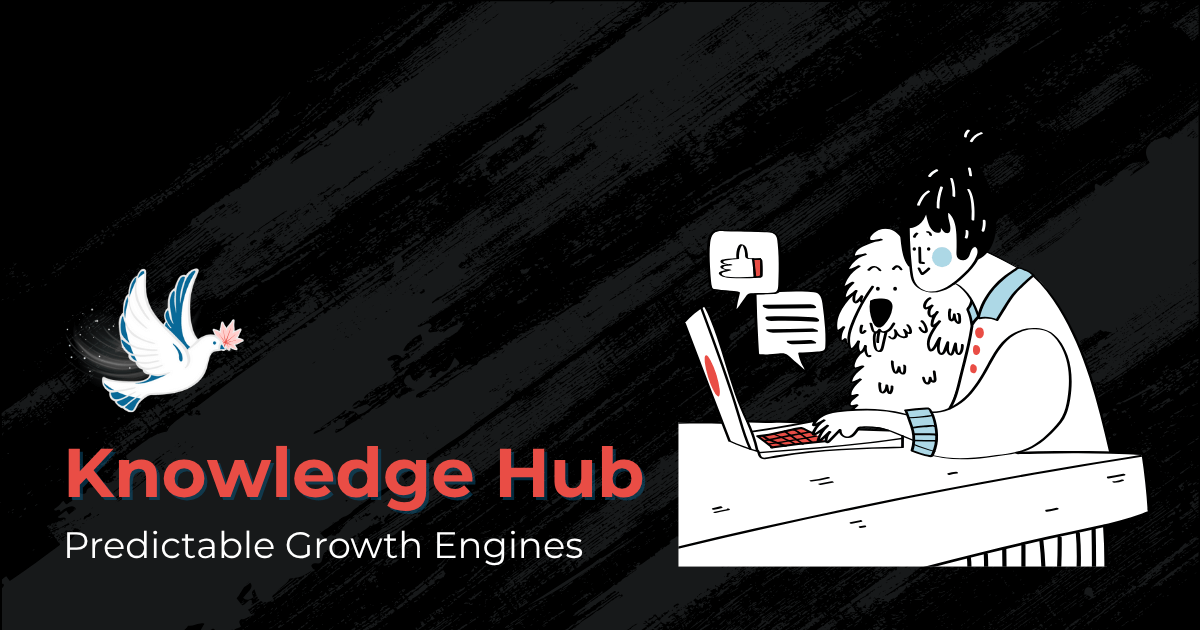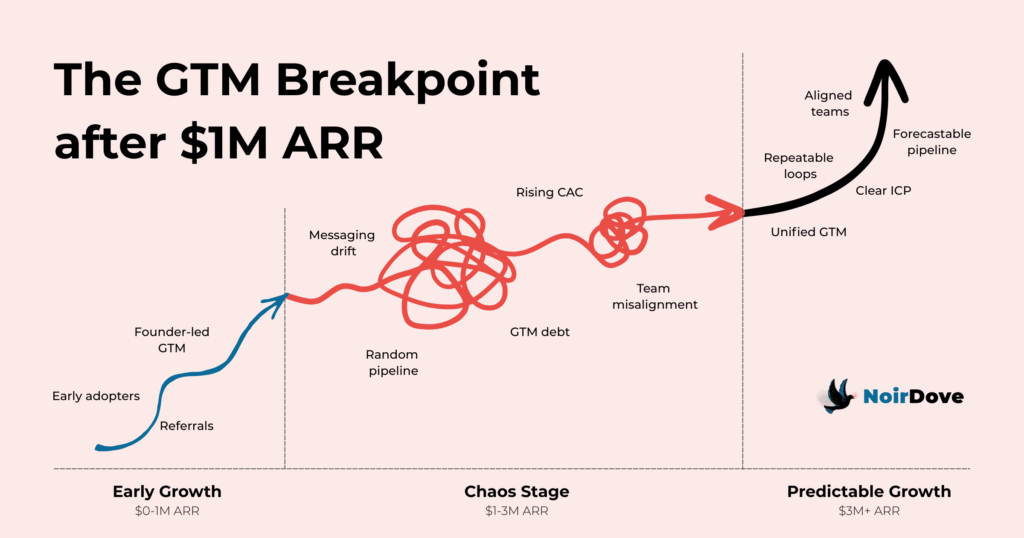Understanding the Growth Plateau Effect and How to Break It

Most startups experience fast growth in the early days when founders push hard, customers respond, and momentum feels natural. But as the company grows, this pace suddenly slows, often for no clear reason.
The team works harder, output increases, yet growth refuses to follow the same curve. This slowdown is not random. It is what is called the Growth Plateau Effect.
Understanding why it happens is the first step to building steady, predictable growth once again.
What Is the Growth Plateau Effect
The Growth Plateau Effect is a stage where your startup stops growing at the same velocity despite having customers, revenue, and a strong product. It usually occurs somewhere between $1M and $5M ARR.
This slowdown doesn’t mean your product stopped working; it means your early GTM approach has reached its limit. Now, in order to move further, business needs a real growth system.
Why It Happens: The GTM Breakpoint
Most companies grow faster than their GTM system can support. The growth is simple and direct earlier on, but it turns complex and multi-team as it progresses.
This difference between “founder-led growth” and “system-led growth” is the GTM breakpoint. It’s the reason growth feels unpredictable beyond a certain stage.
1. The Founder-Led Growth Phase Reaches Its Ceiling
The early growth is dependent on the founder: energy, speed, clarity, and personal selling are important. This gives fast traction in the beginning but cannot scale beyond a point.
The rest of the team lacks this intuition when the founder steps back, which drives inconsistent pipeline and uneven sales velocity.
2. Teams Start Operating Independently
As the company grows, each team is focused on its own objectives: marketing wants leads, sales wants deals, and product wants adoption.
All of them are working hard, but not together. This misalignment quietly slows growth and makes results unpredictable.
3. Activity Grows, but Systems Do Not
Startups respond to slowdown by doing more: more outbound, more content, more ads, more channels. But “more activity” does not fix the plateau.
Activity produces noise. Systems produce results. If you aren’t working from one unified GTM engine, more work just contributes to noise.
4. Increasing CAC Reveals GTM Debt
CAC starts to rise because the GTM foundation is weak. You pay more to acquire the same kind of customer, and the returns on campaigns start dropping.
This is not a marketing failure. It’s a sign of GTM debt: unclear ICP, scattered messaging, misaligned teams, and no predictable loops.
5. Internal Assumptions Replace Market Signals
You build from customer pain in early growth, but later you start building based on gut feeling, incomplete feedback, and the loudest opinions inside the company.
The shift from market-led decisions to assumption-led decisions slows down growth while increasing random outcomes.
How to Break the Plateau
You break through the plateau by substituting activity-driven growth with system-driven growth. The company needs a unified GTM architecture that aligns demand, conversion, and retention.
The predictable growth engine offers steady pipeline, clear messaging, aligned teams, and repeatable loops which compound over time.

Frequently Asked Questions (FAQs)
1. Why does growth slow down after $1M ARR?
Because the founder-led growth stops scaling and this business hasn’t yet built a mature GTM system to support the next stage.
2. Isn’t the problem of the plateau either weak marketing or weak sales?
Usually not. The root cause is misalignment of teams and the absence of one GTM engine.
3. Will adding more channels fix the slowdown?
No, more channels will make that plateau worse if your foundation is weak. You need GTM clarity before expansion.
4. How long does it take to break the plateau?
Most startups experience a return to stability within 60 to 120 days after implementing a predictable growth system. 5. How do I know if the plateau is a GTM problem or a product problem? If customers love a product but pipeline is unstable, it’s a GTM problem. If usage is low, that may be a product issue.


